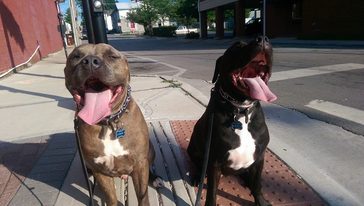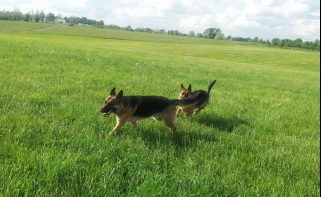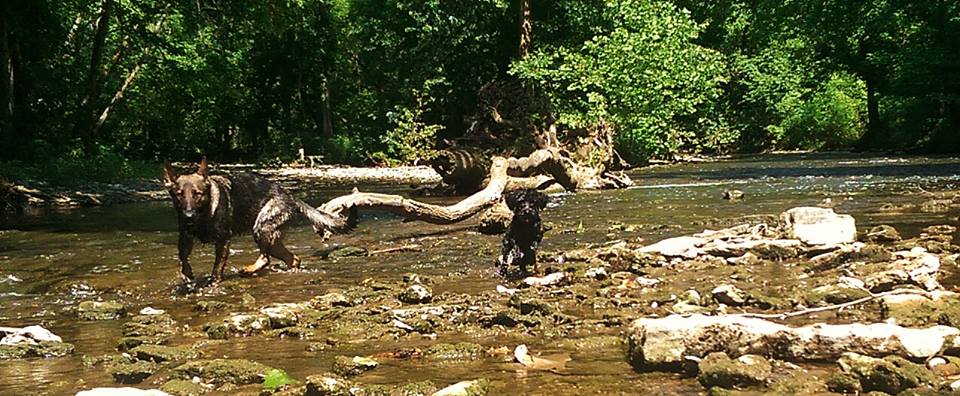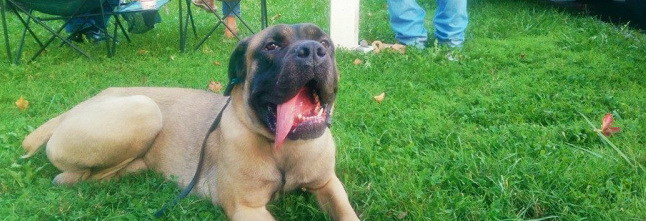|
Dogs are social animals that appreciate being understood as much as anyone so sometimes when we are baffled by our pets behavior we may need to look at the basics again. I have a lot of clients who come to me with no way to communicate with their dogs and feel like it's the fault of the dog or the clients blame themselves. Instead of blaming yourself you simply improve you communication and you will see results right away. I've decided to write down some of my favorite ways to increase communication and improve your skills with simple exercises.
Adam Madore
professional dog trainer with Artisan dog training Lexington / Nicholasville
2 Comments
3/5/2014 0 Comments To rescue or buy? One of the things that makes America great is all the choices we have today. When buying a dog the sky is the limit. You can choose from color,breed, and even temperament. I am a huge advocate for dog ownership in any form but I would like to talk about the major differences and what to know. When selecting a purebred dog you will run into many complications and these can really affect what kind of dog you get. Starting with general ideas you will have two basic differences in every breed. Working line and show line. Working line dogs are built to be strong tenacious and intelligent. Show lines are meant to be she epitome of the breed in all conformation(looks). Knowing your breed and the inherent illnesses that the breed is affected with can also change your mind. I usually choose working lines because of my profession, but that is not always what you may read about the breed. A good example is the dachshund. They are great with kids and very sweet but some working lines are very energetic and can wear down most children even. I could expand upon this subject for days but we will move on. For questions about your breed feel free to contact me. Show lines are usually very good examples of the breed and fit the descriptions. If you decide to get a rescue dog from a shelter or an organization you should still do your homework. Start by having a good generalization in mind. Big,small, calm, or ,excited. Stick to the plan and take your time. Most of the shelters are going to have plenty to choose from and they are always a good bargain. Adam Madore
professional dog trainer with Artisan dog training Lexington / Nicholasville 8/9/2012 1 Comment Spay or Neuter? Let me start off by saying I am not against spaying or neutering. 5 Million pets a year are entered into shelters. To spay a female can reduce the amount of pets exponentially. I have been asked by most of my customers if they should spay or neuter and most of the time we are talking about puppies or very young dogs. This is where I differ somewhat from mainstream. I would prefer to wait for a male to be past 7 months for a normal breed or one year for a giant breed. Females should be spayed just before their first heat to make the surgery easier. The reason I feel this way is because dogs need to grow as much as possible before you shut off the hormone supply. Many people would regret getting the surgery too early if they knew the dog wouldn't grow to full potential. Myths surrounding these procedures are that they will stop certain behaviors or calm down. Dogs will only change with training or experience. You cannot give a dog a random chemical and expect it to stop peeing. The same goes for removing one. The reason to spay or neuter is only to control pet population. No other reason is valid. If you have any questions or concerns feel free to ask. Adam Madore
professional dog trainer with Artisan dog training Lexington / Nicholasville 7/28/2012 0 Comments Training methods I have a lot of people who talk to me about trainig and were filled with information about training and didn't know what they had started on or how to cotinue. This post today will outline the different styles of training and the limtations as well as the strengths and a few terms. Training dog in America was originally marked by military dog trainers and in particular William Kholer. On the other side of the beginning of a different do training style we have Marian and Keller Breland. Kholer was a great dog trainer and he employed the use of choke chains and leashes as the foundation of his training. His book can be found under The Kholer Method of dog training and is still the cornerstone of military style of training. The Brelands used treats and clickers to train animals. They studied under B.F.Skinner and later started a school called Animal Behaviour Enterprises in wich they trained chickens to ensure that people understood their method and how to use it for dogs. This is some of the origins for stryles used at places such as BigBoxSmart. Training has taken some very important people on both sides that shaped it into what it is now. Barbara Woodhouse and Karen Pryor to name a few. They either ran paralell to or explained more in depth earlier ideas. Prong or pinch collars are a tool that has since replaced the choke chain just as manufactured treats have replaced raw meat originally used in treat training. Positive reinforcement is now the term used for treat training and Operant conditioning is usally used for leash and collar. A third type of training has been in use for many years called modeling and it will also be explained breifly but retains it's earlier name. First I will explain the limitaions. These do not apply to every dog or every person. When you are using Positive reinforcement you will never tell a dog no or withhold from the dog anything. You will mark a behaviour as only positive and wait out the negative. Without being extremely dedicated this method can get pretty hairy on its own as the owner has to really understand the nuances to make a behavior end. Also it can take your dog a very long time to advance. Operant conditioning is limited to only controlling your animal with a leash and collar or electric collar and never off leash or without stimulation. This leads people to rely too heavily on the collar for all of their communications with the dog and can be hard on a dog without proper use. Modeling is using your hands to "sculpt" a dog into position repeatedly while telling them the command and holding them there. This method can take a very long time and will be very hard to use on a dog that is excitable. The positives are just as varied. Modleing allows you to put a dog in extraordinary positions wich they will hold for as long as you will tell them. A classic example is Lassie. Positive reinforcement allows you to teach a dog to think through problems and can lead to fantastic tricks in a very short time. An example would be Eddie on Frazier. Operant conditioning allows you to start control of a dog when you first begin training and shows immediate results. A famous example is Rin Tin Tin. I use any form of training a customer wants but if I reach a limitation and need to I can switch tactics or blend them together. As always let me know if you have any questions and I will be glad to answer them. Adam Madore
professional dog trainer with Artisan dog training Lexington / Nicholasville 3/28/2012 1 Comment Touch CommandMy customers recently seem to be asking quite a bit if you can teach an old dog new tricks. In this video I used a totally green 11 yr old and proved it. Adam Madore
professional dog trainer with Artisan dog training Lexington / Nicholasville |
AuthorAdam Madore is a dog trainer with a passion for training and dogs in general. Archives
July 2014
CategoriesAll Aggressive Dogs Anxiety Chewing Contest Dog Training Drawing Faq Feeding Food Free General Obedience General Tips Gift Card Potty Training Puppy Seperation Socialization |
Search by typing & pressing enter



 RSS Feed
RSS Feed
